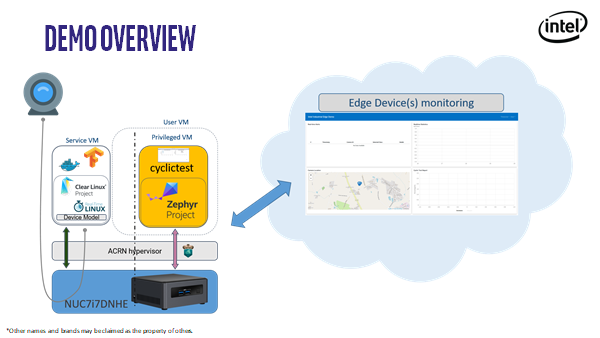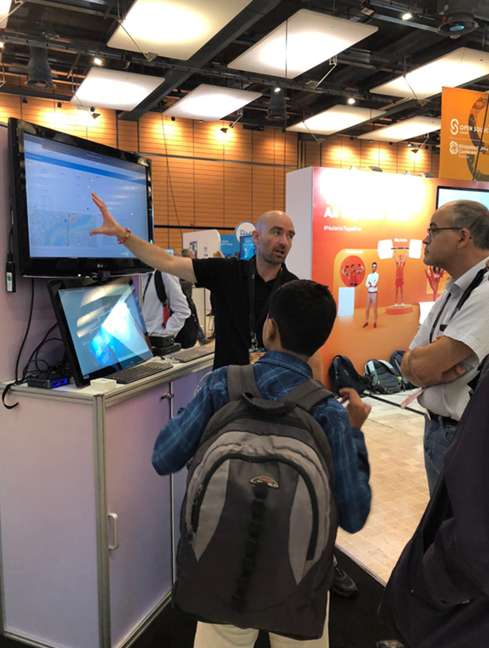Written by Geoffroy Van Cutsem, Technical Marketing Engineering Manager at Intel

This blog post originally ran on the Project ACRN website. For more content like this, click here.
Geoffroy Van Cutsem from Intel featured ACRN™in a compelling demonstration of the power of workload consolidation in edge devices. This was presented at the Open Source Summit EU in Lyon France.
The “Industrial IoT Edge to Cloud demo” develops an end-to-end scenario using many innovative open-source projects. The use case presented is an industrial edge node running real-time and Artificial Intelligence (AI) workloads on a single platform. Many edge devices require a strict real-time behavior for some core functionality, for example a robot arm control. Being able to do advanced processing on the edge produces faster reaction times and optimizes usage of the network infrastructure. The cloud back end provides the next-level of analysis when required and offers a holistic view of the edge nodes.
This demo featured a number of open-source projects and technologies relevant to the IoT and Edge domains. This included Project ACRNTM (IoT hypervisor), Zephyr ProjetTM (RTOS), and Intel® Optimization for TensorFlow* (AI), Docker (Container OS-virtualization). Through real-life use cases and hypothetical scenarios, the demo showed how combining diverse projects enables new functionalities such as advanced workload consolidation.

Attendees saw an edge device with Zephyr running in a real-time virtual machine (RTVM) under the ACRN hypervisor. The real-time characteristics of the Zephyr VM are monitored by running the “cyclictest” benchmark inside it. Running concurrently on the same platform, but in a different virtual machine (VM) is an object-detection algorithm based on TensorFlow (AI) in a Docker container. It is constantly analyzing a video stream detecting various objects and raising alerts when abnormal conditions are detected. Alerts are sent by the edge device to a back end system, along with a video snapshot of what happened leading up to the alert. This allows an operator to monitor the device and be informed of important events. It also enables the operator to replay the sequence. This pre-processing performed directly on the edge device saves expensive network bandwidth at the edge since the entire video monitoring stream need not be sent to the cloud. It also helps minimize the latency between detecting a problematic condition and reacting to it since both functions are co-located. The power of the cloud is saved for more involved processing and analysis that is less latency-sensitive and more compute-intensive.

The open source projects featured in Geoffroy’s demos illustrate just how new and innovative open-source projects such as ACRN, Clear LinuxOS, and Zephyr make workload consolidation a reality even when strict realt-time characteristics are required. We encourage you to adopt, develop, engage and begin contributing to these projects today. Our supportive communities would love to hear from you, too. Join us! https://01.org/projects
If you are interested in contributing to the Zephyr Project please see the Contributor Guide or the Getting started Guide. Join the conversation or ask questions on the Zephyr Slack channel or Mailing List.